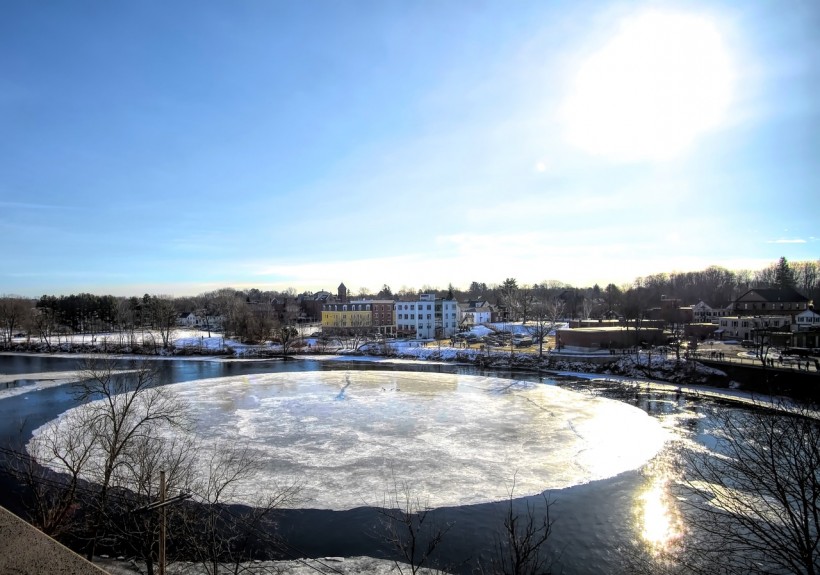The arctic blast that is attacking much of the US was able to reach the Pacific Northwest. It made a river in western Washington freeze, resulting in a complex and amazing outcome of temperature and physics.
Ice Disks Found in Western Washington River
Laurie Ascanio, a local photographer who lives by the Stillaguamish River in northwestern Washington, said that a neighbor told her that an odd circular ice disk was spinning in the river close to where it gets into contact with the Deer Creek. This happened last Saturday.
Ascanio then grabbed her husband and their own drone to snap the ice disk gem. According to the neighbor, they have lived by the river for three decades, yet they were only able to witness such a phenomenon once in the past.
The ice disk is produced when a river turn ends up making an eddy by the bank. As the surface of the river freezes slowly, the slow and spinning motion carves the ice into a whole and perfect circle. This is accomplished through a process known as rotational shear.
Arctic Blast in US
Last Tuesday, millions of Americans were greeted with snow, frigid temperatures, and freezing rain as an Arctic blast surged through most of the US. This marked the end of a "snow drought" in New York City that lasted for almost two years. It also placed much of the West into a freezing state.
The Central Park of Manhattan was covered with up to 3.6 centimeters of snow. In just a night, around 10 to 13 centimeters of powder coated Washington, DC, while five to eight centimeters fell in Philadelphia and Baltimore.
On Tuesday morning, temperatures in the country went as low as -38 degrees Celsius (or -36 degrees Fahrenheit). This was in the small town of Briggsdale in Colorado.
The weather service has also issued a warning pertaining to "lake effect snow" on Tuesday.
On top of this, over 100 million people across the US are under alert for wind chills. This stretches from the border of Canada up until the border of Mexico. Winds that breeze through could contribute to the wind chills that are life-threatening.
In South Dakota, wind chills that go as low as -45 degrees could lead to frostbite in just a matter of five minutes. Wind chills as low as -30 degrees are expected from the Northern Rockies up to northern Kansas and into Iowa.
Over 3,100 flights within, out of, and into the US were canceled on Monday, with over 9,000 flights also getting delayed. Schools across West Virginia, Texas, Tennessee, Mississippi, Louisiana, Georgia, Arkansas, and Alabama have seen closures due to the frigid temperatures.
RELATED ARTICLE: Experts Define How Winter Season Affects Physical Activity Maintenance of Adults; Coldest Months 'Dreadful' for the Age Group
Check out more news and information on Environment & Climate in Science Times.















